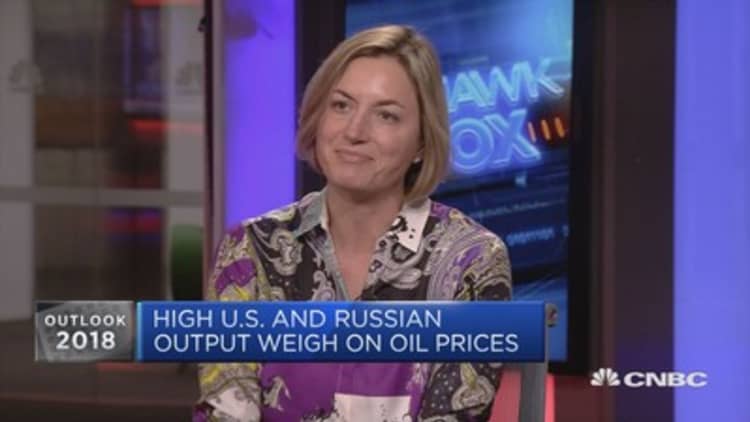Oil prices rose about 2 percent on Wednesday to the highest in 2½ years, with buying spurred on by a sixth day of unrest in OPEC member Iran and strong economic data from the United States and Germany.
Iran's elite Revolutionary Guards have deployed forces to three provinces to put down anti-government unrest, their commander said on Wednesday. Six days of protests have left 21 people dead.
U.S. West Texas Intermediate (WTI) crude futures were up $1.26, or 2.1 percent, at $61.63 a barrel by 1:57 p.m. ET (1657 GMT), near their highest since June 2015.
Brent crude futures — the international benchmark for oil prices — rose $1.24, or 1.9 percent to $67.81 a barrel, having touched the highest level since May 2015.
"While the Iran tensions are certainly a factor, the slew of remarkably strong economic data today is also forcing the rally," said John Kilduff, partner at Again Capital in New York.

"Record low unemployment in Germany and the sky-high ISM manufacturing reading reinforces that demand for energy will continue to grow in robust fashion ... It's a multi-asset rally, which crude oil is caught up in today."
Germany's unemployment rate hit a record low in December, underpinning a broad-based economic upswing. U.S. factory activity increased more than expected in December, a further sign of strong economic momentum.
Manufacturing and construction reports also fueled expectations for a robust U.S. economy in 2018. The Dow Jones Industrial Average hit a record high.
U.S. heating oil prices got a boost from frigid weather on the East Coast, which has drawn a number of tankers carrying diesel and heating oil from Europe, reversing a traditional trade route.
Ole Hansen, head of commodity strategy at Denmark's Saxo Bank, warned that "multiple but temporary supply disruptions" like the North Sea Forties and Libyan pipeline outages (and) protests across Iran ... helped create a record speculative long bet."
With pipeline outages resolved and protests in Iran showing no signs of affecting its oil production yet, Hansen said prices could fall in early 2018, especially with rising U.S. output.
"It is only a matter of time before the 10 million barrel per day (bpd) (U.S.) production target will be reached," Hansen said.
Hansen said he also had "some concerns about the Chinese economy in 2018 that ultimately could lead to lower than expected demand growth."
As a result, he said his bank saw lower crude prices by the end of the year, with Brent at $60 per barrel and WTI at $57.

Supplies were healthy. U.S. oil production has risen by almost 16 percent since the middle of 2016, hitting 9.75 million bpd at the end of last year.
Some were concerned Russia may not keep its pledge to cut output by 300,000 bpd from the 30-year monthly high of 11.247 million bpd hit in October 2016. The latest data for 2017 showed Russian output rose to an average of 10.98 million bpd from 10.96 million bpd in 2016 and 10.72 million bpd in 2015.
"Even though they have reduced that astronomical number, they are still producing more (in 2017 than in 2016)," said Matt Stanley, a fuel broker at Freight Investor Services (FIS) in Dubai.
Commerzbank said in a note that despite the marginal annual increase Russia was still complying with its deal to cut output.

